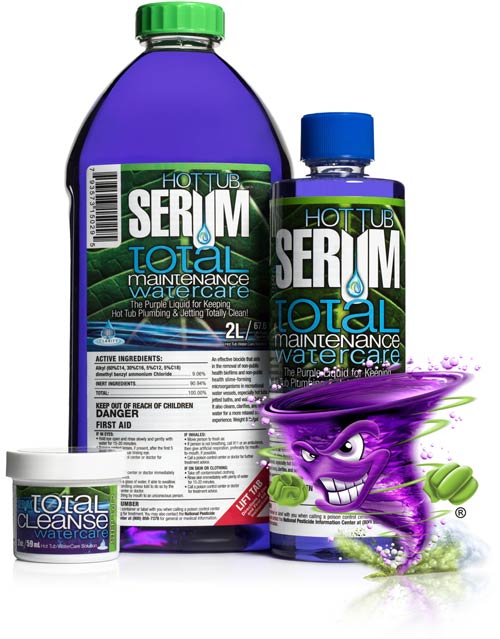Among the many possible spa sanitizers, three dominate the market. In order of use, these are chlorine, bromine, and biguanide.
- Chlorine comes in several forms, including dichlor (a combination of chlorine and cyanuric acid), as an essential pairing, required by the EPA, for several mineral based regimens (usually based on silver ions), and salt systems (using sodium chloride)
- Bromine is generally either added as a granular or tablet, though some salt systems are based on sodium bromide.
- Biguanide is just that, though it does require the use of hydrogen peroxide as an oxidizer.
Key Takeaways
- Biguanide is the least commonly used sanitizer among the top three.
- Biguanide is quite gentle, hence a possible solution if chlorine or bromine bother your skin.
- Biguanide is completely incompatible with chlorine & bromine.
- Biguanide is likely a more expensive spa sanitizer than other options.
- Issues such as mold and pink slime are more common when using biguanide than chlorine & bromine.
What is Biguanide?
Biguanide is polyhexamethylene biguanide or shortened as PHMB. Two popular brands of biguanide for spas are Baquacil & Soft-Swim. These generally contain 20% PHMB. These products are EPA approved for use in spas, however unlike the halogen-based sanitizers (chlorine & bromine) they are not also oxidizers.
Biguanides have a history starting in hospitals where they were and are used to quite effectively prevent bacterial growth. They are also used in contact lenses solutions.
How do Biguanides work?
Biguanides attached to single cell organisms, notably bacteria, causing the cell wall to break. Essentially, the bacteria start leaking and die.
Advantages & Disadvantages of Biguanide
If you have sensitive skin, you will likely find a biguanide sanitizer is gentler and more comfortable to use. It also has little to no odor and will not bleach swimming clothes. However, biguanide has a # of disadvantages.
- It is completely incompatible with halogen-based sanitizers (chlorine & bromine). You must drain and clean your spa if you are converting from chlorine or bromine to biguanide.
- Maintaining clear spa water can be more of a challenge in a biguanide spa. Additionally, foaming is often an issue.
- As noted above, biguanide is not an oxidizer, hence it has no ability to rid your spa of biologic wastes, including dead bacteria, dead skin cells, etc. And biguanide is not compatible with the common oxidizers used in spas to remove these wastes, notably MPS (non-chlorine based shock) and ozone. You must use hydrogen peroxide as an oxidizer in a biguanide spa.
- Likely because biguanide is gentler than halogen sanitizers, issues with mold and pink slime are not uncommon in biguanide spas.
Serum Total Maintenance Is a Great Adjunct for Biguanide
If you chose to sanitize your hot tub with biguanide, you will find that our Serum Total Maintenance is a terrific addition to your sanitizing regimen. As an EPA Registered back-up, secondary sanitizer, Total Maintenance will prevent the two most common issues in biguanide spas. It will ensure your spa water remains clear & inviting. It will also prevent mold and pink slime problems. Let me note however that Total Maintenance is also NOT an oxidizer so your use of hydrogen peroxide to rid your spa of biologic wastes that accumulate is very important.
Thanks for reading,
Tony Turbo






